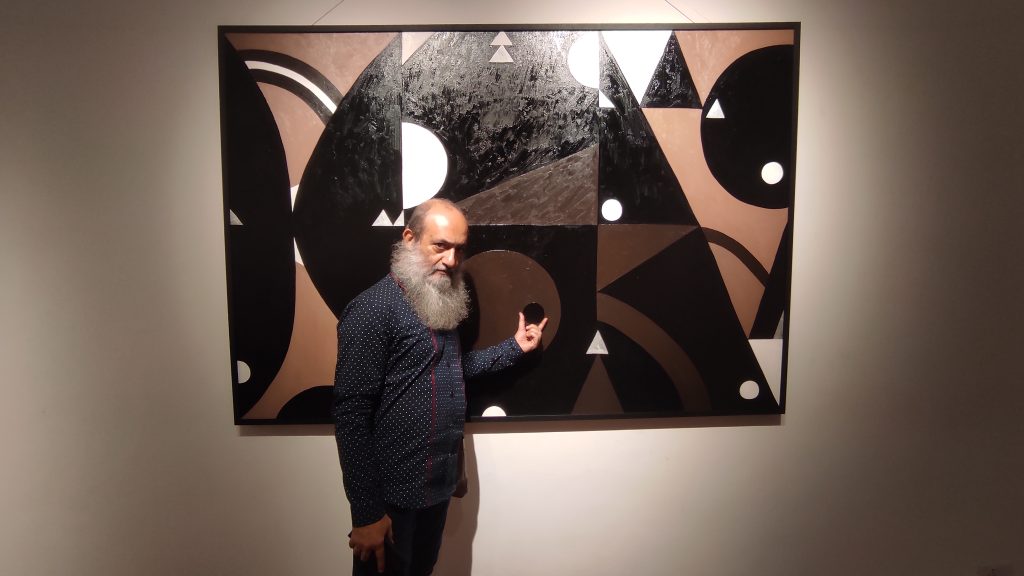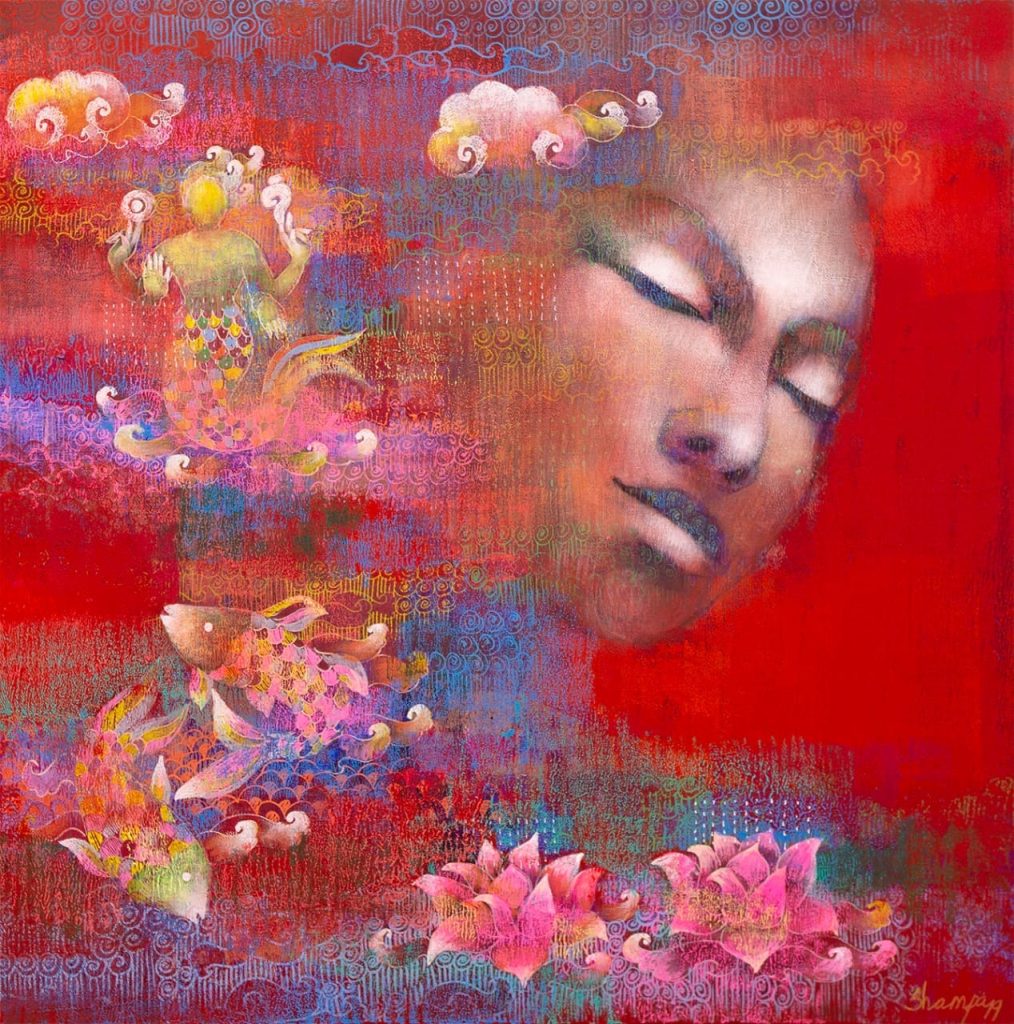There’s an extraordinary exhibition called “Of Thoughts and Memories” at the India Habitat Centre. The main focus of this exhibition was to represent the fascinating geometrical nature of our world through various works of art. Without a doubt, the entire world is filled with an abundance of geometric compositions, found in both the physical structures that surround us and the intricate world that resides within us. The geometry of our lives gracefully dances around our bodies, eventually crystallizing into a magnificent form, as artist Sanjay Bhattacharyya has brilliantly depicted. Not only do these shapes define the true nature of reality, but they also delve into the deeper aspects of life, inquiring about the quest for ultimate purpose. The colours have been carefully chosen to convey true emotions. In addition to the significant use of black, whites have been strategically incorporated into areas that required balance and contrast with various other colours. The spatial and temporal intersections could be identified and understood in the way he has painted those shapes. Furthermore, the voids are observed to encapsulate echoes. In these times of gimmickry, one can be happy to be confronted with the artistic expression of serenity that is so essential to human existence.
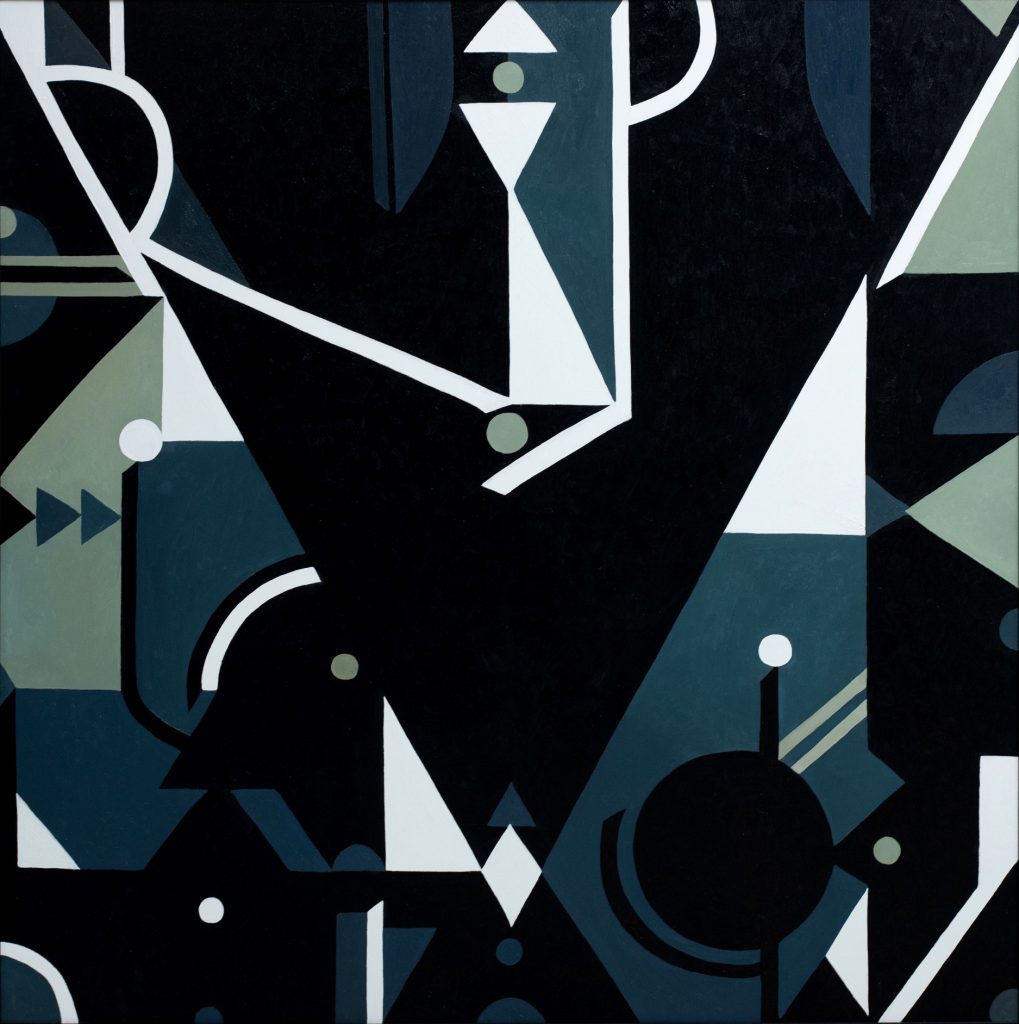 Art by Sanjay Bhattacharyya. Image Courtesy: Arushi Arts
Art by Sanjay Bhattacharyya. Image Courtesy: Arushi Arts
The paintings possess a peculiar allure and radiance due to the subtle and controlled use of white and nuanced chromatic gradients within the expanses of dark contrast. This results in a captivating and austere aesthetic. The voids also appear to encapsulate echoes. The industrial palette creates a captivating aesthetic. Black dominates the surroundings, creating an atmosphere of intensity and profundity. It not only outlines the sombre spaces but also seeps into every corner, serving as a canvas for a captivating interplay of shapes. This interplay evokes a sense of impersonal energy and an intriguing exploration of the void. The compositions display an enthusiastic celebration of movement. Then there are these where the shapes are cradled in vast dark expanses of quietude. The colors he chooses clearly delineate the cyclical continuity of nature which we see as rising and falling from our perspective of human activity. But for night birds, the cycle reverses itself. At the same time, no night or morning is the same as the last. So, in a sense, by choosing a cyclical timescale, the artist has drained nostalgia of its sense of loss. It is merely capturing the beauty of being in a changing time that is highlighted. The serene essence is beautifully captured by the vibrant greens, silver grey, and blues, all harmoniously connected by the visually stunning ocher shades. These colours seamlessly bring together the duality of morning and evening, day and night, as well as warm and cool hues. The exhibition is enriched by the luminous white flowers and blackened grey shadows, which perfectly blend together to create a captivating and harmonious aesthetic that mirrors the artist’s blossoming maturity.
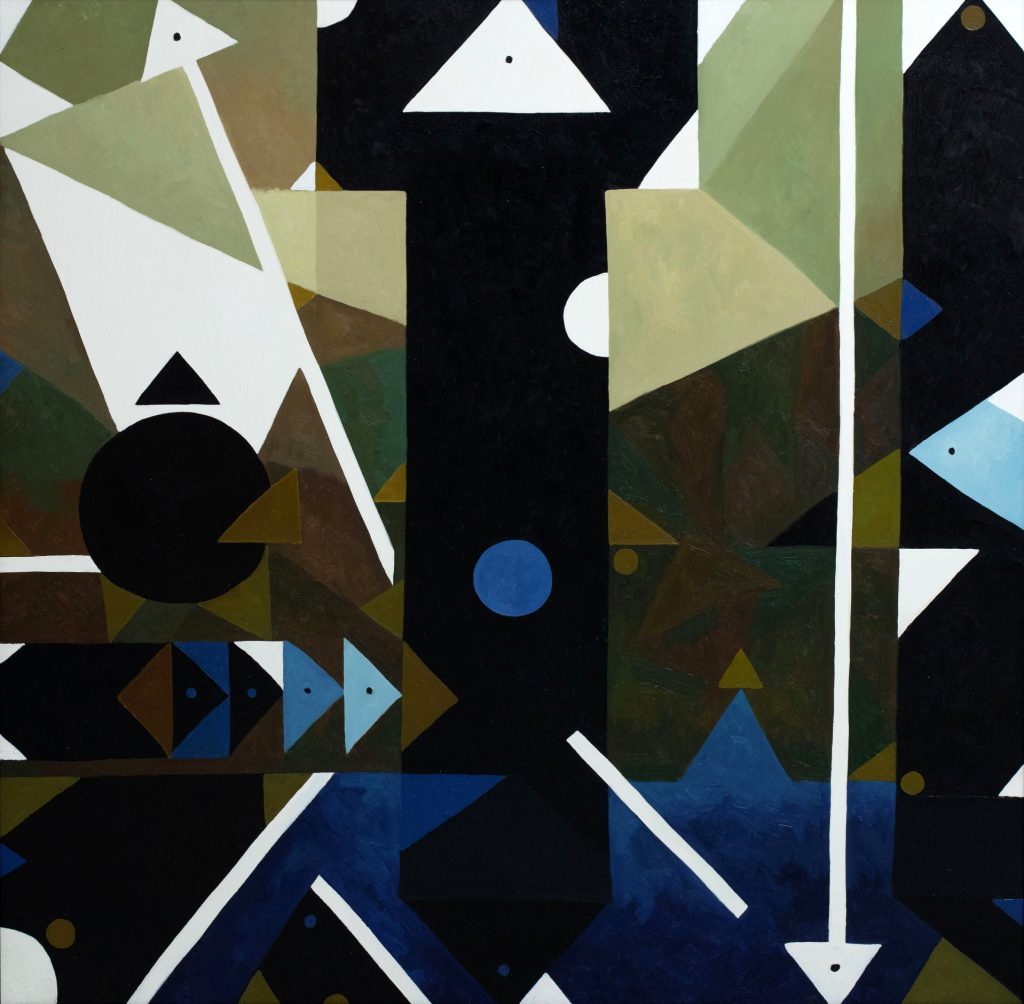 Art by Sanjay Bhattacharyya. Image Courtesy: Arushi Arts
Art by Sanjay Bhattacharyya. Image Courtesy: Arushi Arts
Sanjay Bhattacharyya explained his process, “Basically I am a realistic painter. Throughout the years I did only realistic paintings. In 2006, I had the opportunity to create a series on the master artists Dali and Rembrandt. It was a groundbreaking endeavour, as I introduced captivating geometric patterns consisting of circles, rectangles, and triangles. This innovative use of shapes added depth and intrigue to the series, making it a captivating exploration of their artistry. In 2012, again I did a series called Krishna with the use of those shapes. However, on each occasion, it was the Dali, Krishna, or Rembrandt that truly stole the limelight on my canvas. These supporting elements, unfortunately, failed to receive the recognition they deserved in that regard. Recently, maybe one year or one and a half years back when I was looking at my old works, I saw those, and that time one thing came to mind all our thought processes, the way we think they take a geometrical shape.
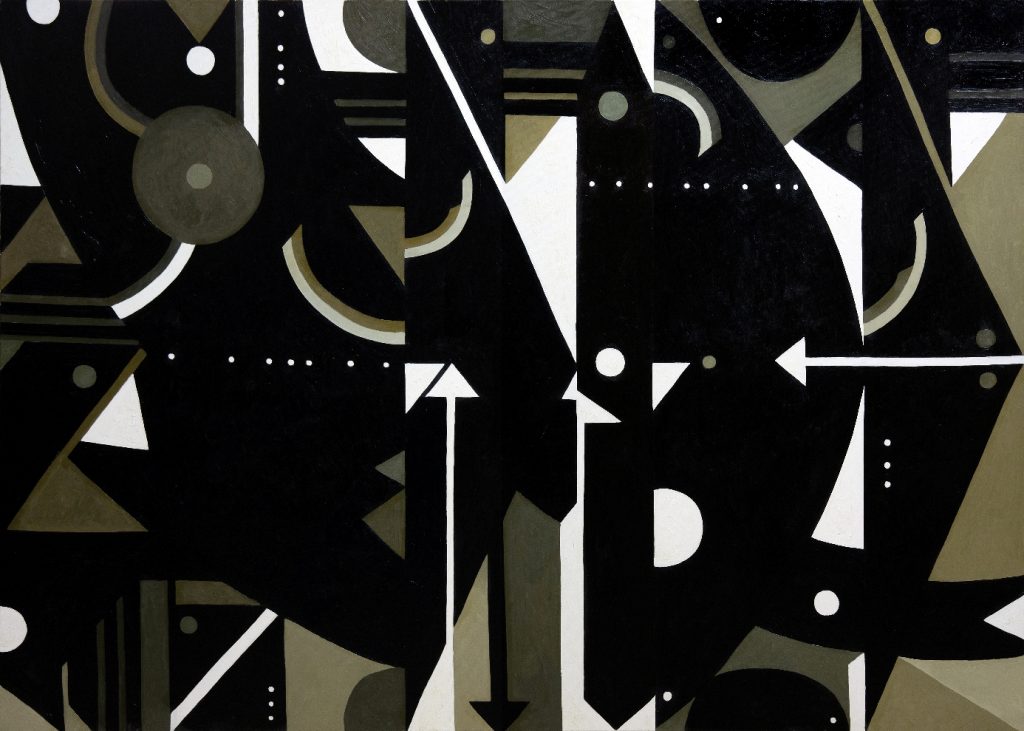 Art by Sanjay Bhattacharyya. Image Courtesy: Arushi Arts
Art by Sanjay Bhattacharyya. Image Courtesy: Arushi Arts
For example, if we’re tense. Our tension goes straight up, it’s like a vertical line going upwards. When you cool down, the lines come down, and when you’re totally settled down. The latter point joins the point where it was started initially. So, it creates a triangle this way. When you’re really happy and joyful, then it gives a circle, as the movement is very first. When your concentration reaches its peak, it manifests as a mere dot. When I gaze upon a colour from my palette and fail to comprehend it, the entire world slips from my mind, leaving only the colour I seek. It is in these moments of intense focus that the surrounding realm diminishes to a mere speck, consumed by the pursuit of that one elusive hue. So those things came to my mind and I started the series. There’s a lot of freedom in this series, why? Because you can draw any shape on the canvas and what happens on the negative space is that you can see the other shapes building up. If you notice my work, you’ll find the shapes that occurred or appeared automatically.”
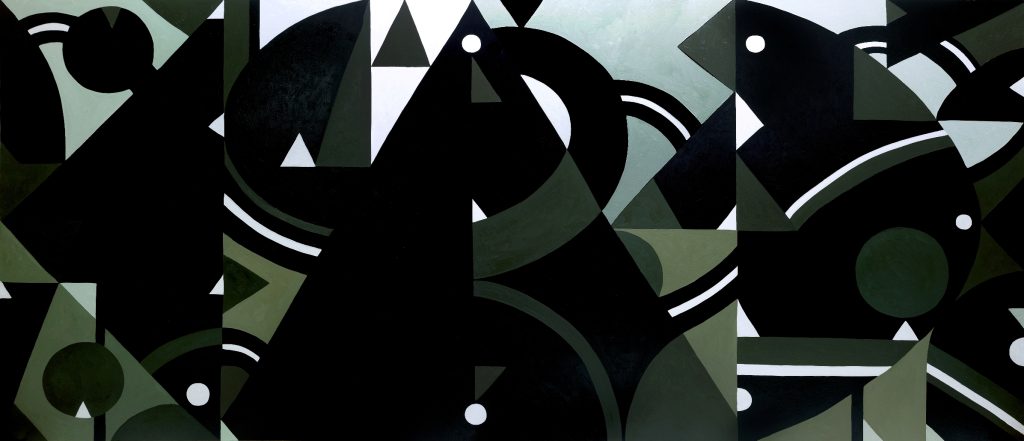 Art by Sanjay Bhattacharyya. Image Courtesy: Arushi Arts
Art by Sanjay Bhattacharyya. Image Courtesy: Arushi Arts
When asked about the dominance of color black in his work Sanjay explained, “Black is serving the main purpose in my work. It’s the main color; if you remove the color black nothing will be left. I am a very disciplined painter when I am doing geometric paintings, I start from the darkest point, then I come to the middle tone, and then towards the highlight. So, the basic process is the same only the format is different. Also, the colours which I have used here in my canvases aren’t my normal colours. Like if you see my earlier works, in which I tried to transform them into geometric patterns, I used colours by purpose. Here I played with colours and left myself free while doing it.” Sanjay’s search for the non-representational is fueled by extensive experience in spatial organization and the creation of visual harmony. The works display symmetrical as well as asymmetrical balance. He applies colour with great precision and attention to detail. The commencement of this exclusive art form is initiated by the combination of stagnant and dynamic elements within the paintings, evoking both a sense of gravity and enthusiasm. The exhibition is on view till 27th September at India Habitat Centre.
Read Also:

Contributor

